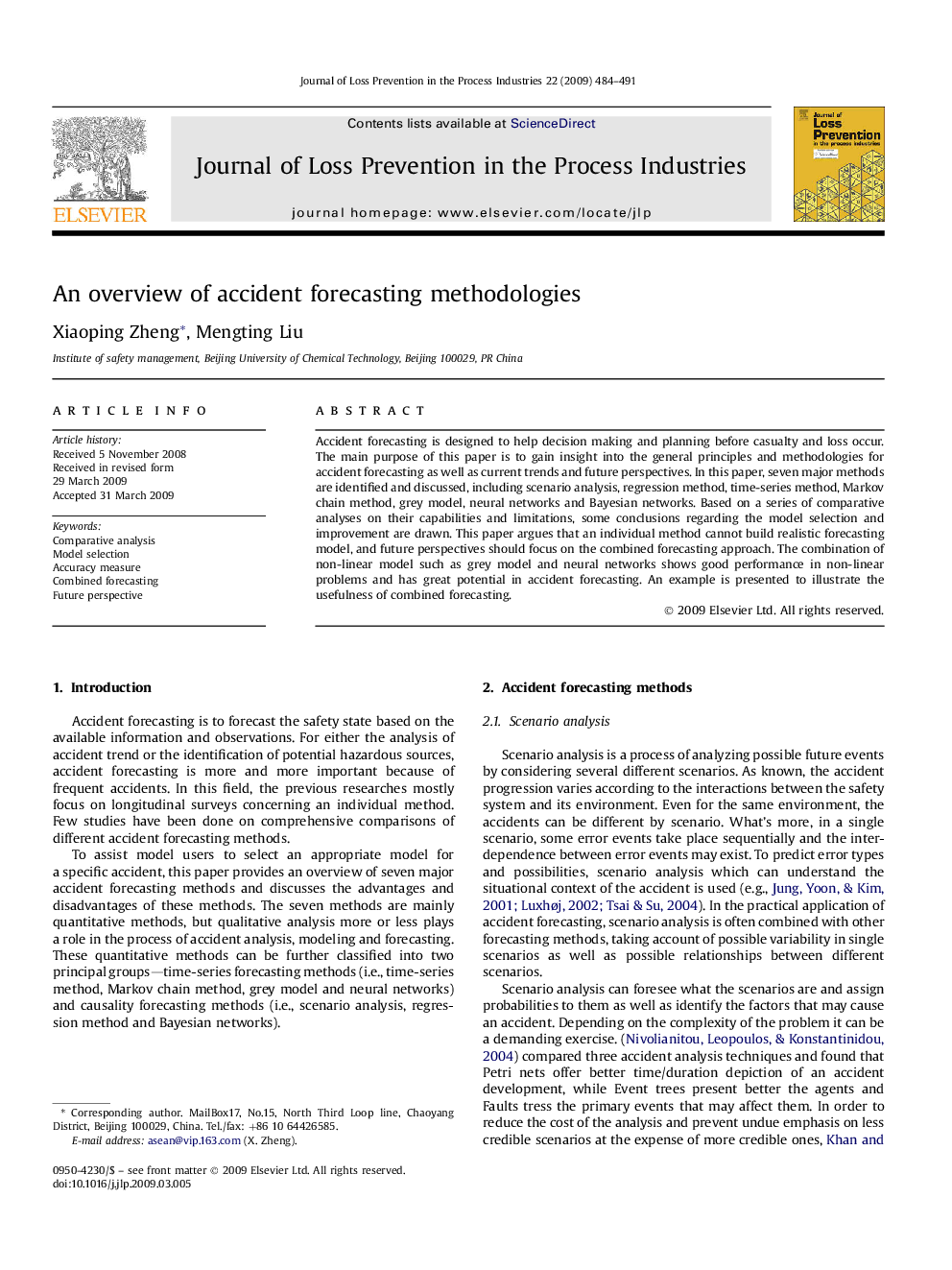| Article ID | Journal | Published Year | Pages | File Type |
|---|---|---|---|---|
| 587172 | Journal of Loss Prevention in the Process Industries | 2009 | 8 Pages |
Accident forecasting is designed to help decision making and planning before casualty and loss occur. The main purpose of this paper is to gain insight into the general principles and methodologies for accident forecasting as well as current trends and future perspectives. In this paper, seven major methods are identified and discussed, including scenario analysis, regression method, time-series method, Markov chain method, grey model, neural networks and Bayesian networks. Based on a series of comparative analyses on their capabilities and limitations, some conclusions regarding the model selection and improvement are drawn. This paper argues that an individual method cannot build realistic forecasting model, and future perspectives should focus on the combined forecasting approach. The combination of non-linear model such as grey model and neural networks shows good performance in non-linear problems and has great potential in accident forecasting. An example is presented to illustrate the usefulness of combined forecasting.
